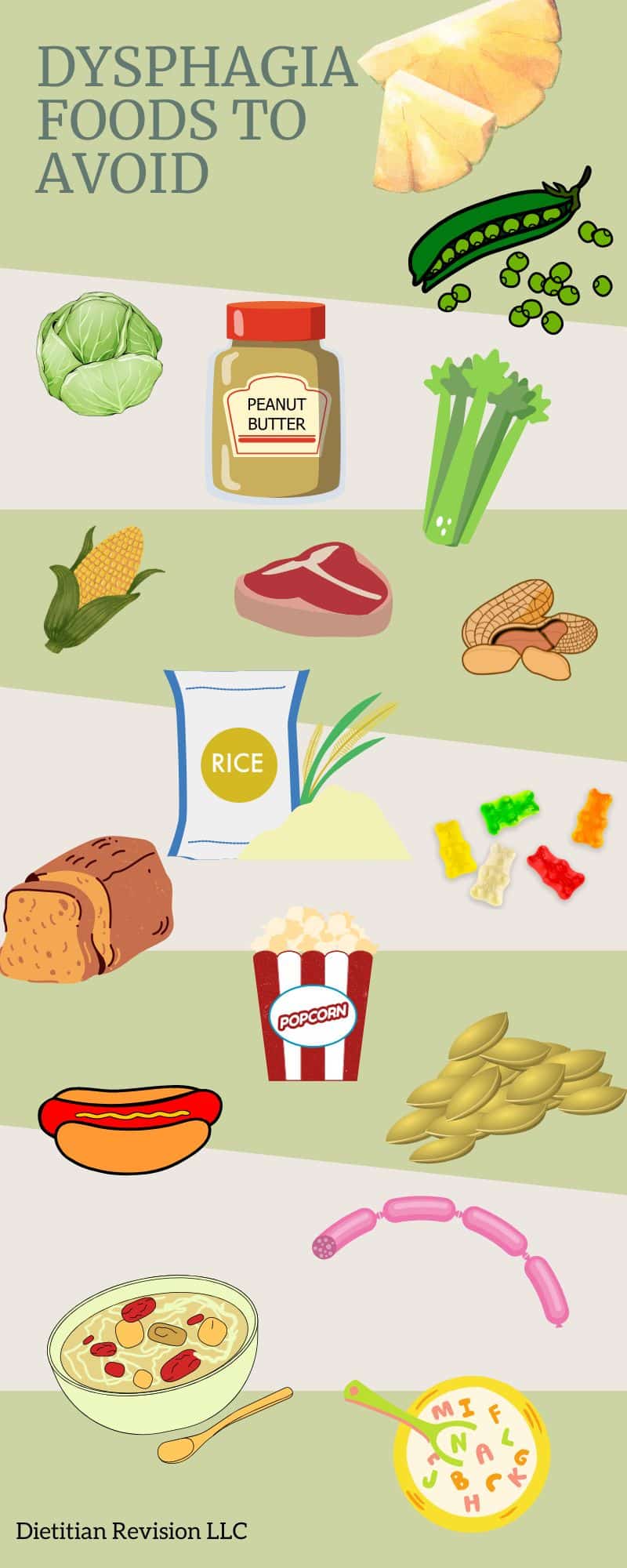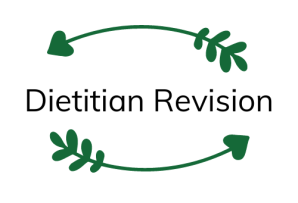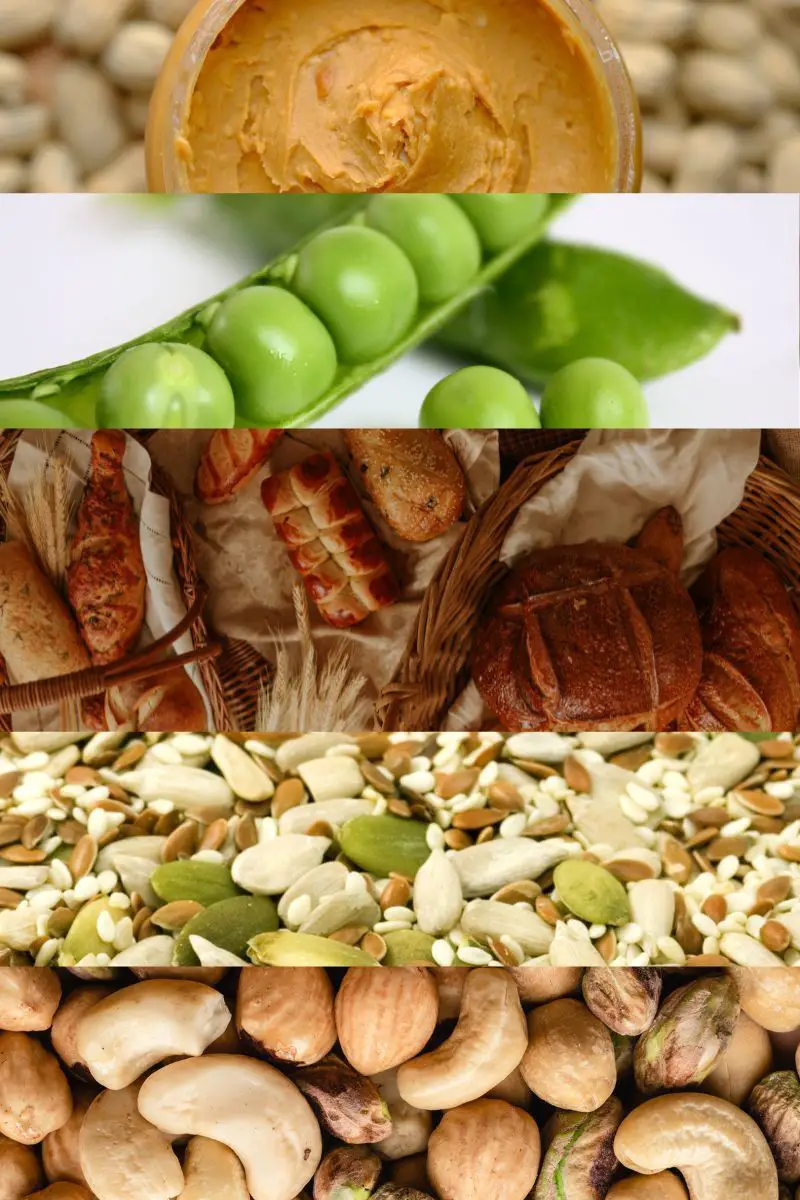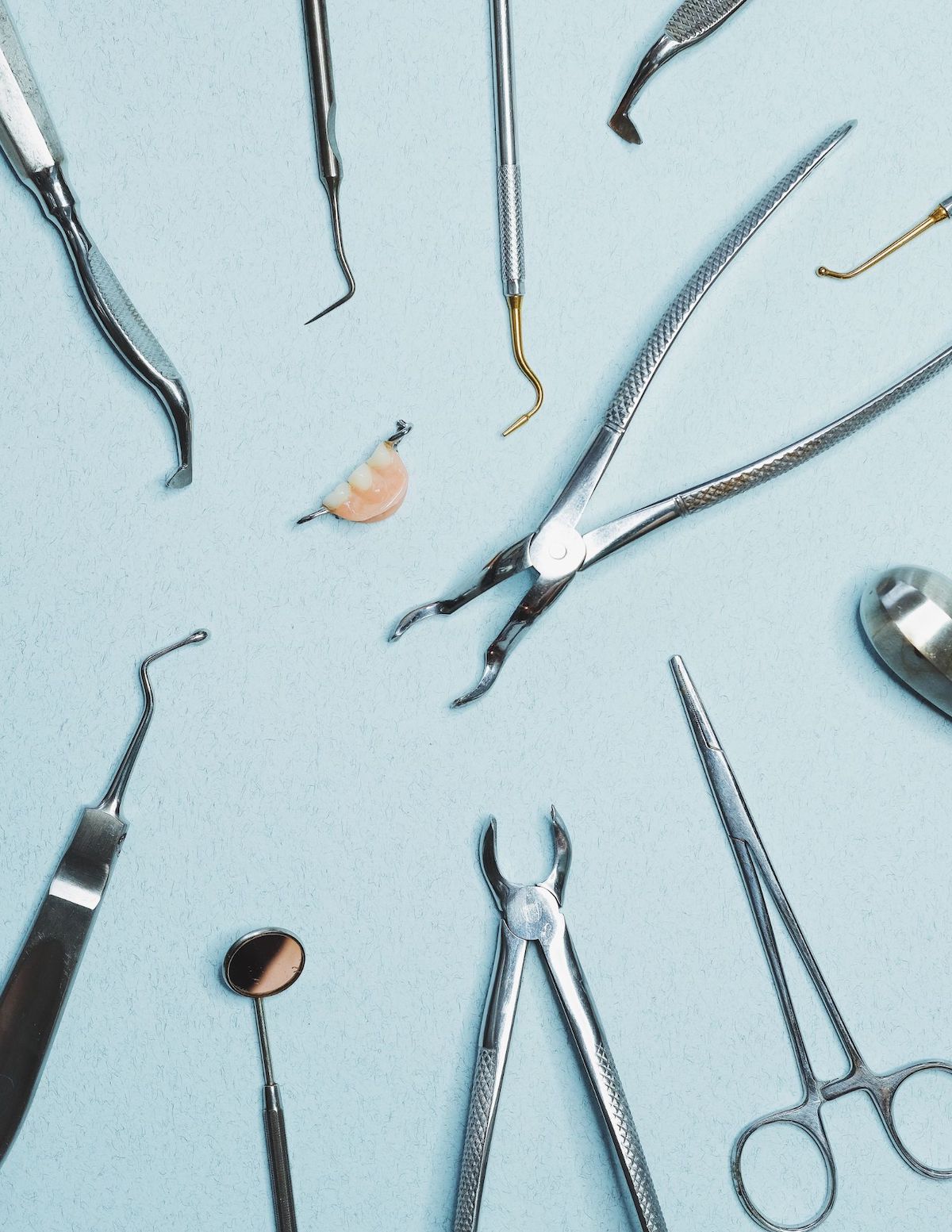Many of the elderly experience dysphagia (swallowing difficulties). 10-30% of adults over 65 years of age suffer from dysphagia (1).
This occurs for a variety of reasons and happens more frequently in those that are institutionalized.
Dysphagia is typically treated with therapy and texture modified diets. There are some types of food that are particularly difficult and dangerous to swallow.
This article will inform you about what dysphagia foods to avoid.
*This article contains affiliate links. I may earn a commission from qualifying purchases at no extra cost to you.
What is Dysphagia?
Dysphagia is difficulty swallowing. It can lead to poor nutritional intake, malnutrition, decreased quality of life, dehydration, aspiration pneumonia, choking, and even death.
Oral and/or pharyngeal phases of swallowing can be negatively impacted by disease processes that are common in the elderly.
Dysphagia Etiologies
Dysphagia in the elderly can occur for many reasons. Muscles are involved in the swallow process. If the body gets weak so can the muscles used to swallow.
Diseases impacting the anatomy of the throat can lead to dysphagia. Examples include throat cancer or strictures (narrowing of the esophagus).
Dysphagia frequently is a symptom of disorders of the brain as they progress. This includes dementia, Parkinson’s disease, multiple sclerosis (MS), and strokes just to name a few.
Dysphagia Treatments
Speech Language Pathologists perform speech therapy on dysphagia patients to strengthen the muscles involved in swallowing and to teach safe swallow strategies.
Modified texture diets are commonly used during dysphagia to improve the safety of oral intake.
This includes mincing or grinding meats, cooking vegetables well, pureeing foods, and thickening liquids. Especially hard to chew and swallow foods may have to be avoided altogether.
You can get my favorite blender bundle right from Amazon for all your food altering needs.
*This article contains affiliate links. I may earn a commission from qualifying purchases at no extra cost to you.
Read Dysphagia Diet: The Basics and IDDSI Explained to learn more about mechanically altered diets.
Dysphagia Foods to Avoid
Certain foods are particularly difficult to chew and swallow safely. These include foods that are (2):
- Hard: nuts
- Dry: breads
- Chewy: candies
- Sticky: peanut butter, rice
- Crunchy: nuts, seeds, popcorn
- Crumbly: dry breads, toast, dry cakes
- Floppy: soggy waffle
- Fibrous: celery, fruit peels, cabbage
- Tough: steak, dry meats
- Stringy: celery, pea pods, pineapple
- Round and long: hot dogs, sausages
Also foods that have husks (corn, peas) or consist of multiple textures (soups, dry cereal in milk), create higher choking risk.
Many of these foods can be difficult to grind or puree to make them safer, so avoidance may be necessary to decrease dysphagia associated risks.

Practical Takeaways
Altering the texture of foods and drinks can make items safer for dysphagia patients to consume.
Some foods are particularly difficult to chew and swallow. Foods that are hard, dry, sticky, crumbly, fibrous, tough, stringy, or of mixed consistencies may need to be eliminated for safety.



